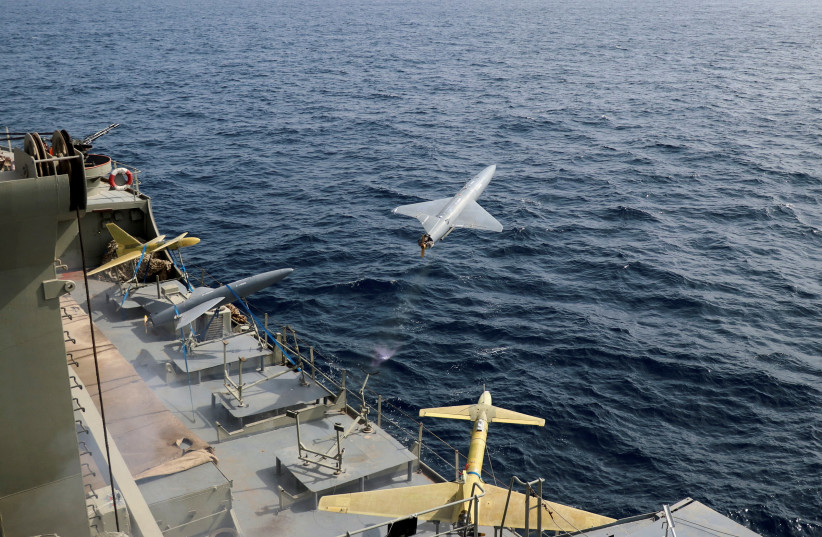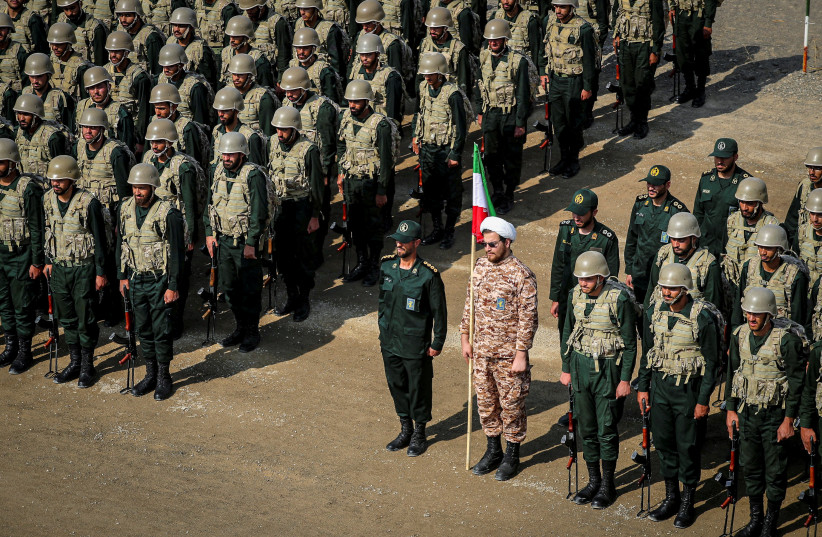A notable uptick in the tempo of activity over the skies of Syria in recent weeks reflects increasing tensions between Israel and Iran. The recent period has also witnessed a rare direct clash between US forces and Iranian proxies in eastern Syria. What accounts for the intensified pace and broader scope of the latest incidents?
First of all, let’s recall the sequence of events. Israel carried out three air raids on Thursday, Friday and Saturday of last week. These included a strike on a UAV facility at the Dabaa airport in Homs province on Saturday, close to the Lebanese border, and a raid on Friday in the Damascus area in which two Iranian Islamic Revolutionary Guard Corps (IRGC) “advisers,” Meqdad Meqdani and Milad Heidari, were among the dead. The latest raids followed two recent additional Israeli attacks on Aleppo airport, which led to its temporary closure.
The Syrian Observatory for Human Rights (SOHR), a monitoring group associated with the Syrian opposition but whose reporting is generally reliable, ran an Arabic-language article on April 3 that noted that Hezbollah had “admitted the killing of one of its members as a result of the Israeli bombing on the night of Saturday-Sunday which targeted military sites of the forces and of Hezbollah in Homs.”
Meanwhile, in eastern Syria, on March 8, four Iran-linked militiamen were killed and eight wounded in a drone strike on a facility in Deir al-Zor city. This area plays host to a large concentration of Iranian IRGC and proxy militia personnel.
The Iranians sought to hit back. On March 23, an Iranian suicide drone strike on a US position at the al-Omar oil field in Hasakah province killed a US contractor and wounded five US service personnel. The US then launched airstrikes on a number of facilities maintained by IRGC franchise militias in eastern Syria. Syrian Observatory for Human Rights reported that one of the dead in the US airstrikes was a Hezbollah officer. SOHR, incidentally, also reported the deaths of three other Hezbollah fighters in Syria last week, when their car ran over a land mine while carrying out a mission in the Homs countryside.

The latest events follow the ominous incident in Megiddo on March 13, in which an operative succeeded in crossing Lebanon’s border with Israel carrying a powerful claymore mine. Ordnance of this type is commonly used by Hezbollah. While many precise details regarding this incident remain under wraps, Hezbollah involvement appears very likely. Lebanon, south of the Litani River, and particularly the border area are under the tight control and monitoring of the organization. It is highly unlikely that any organization or individual would be able to carry out an armed infiltration across that border without the permission of Hezbollah.
Nicholas Blanford, a Lebanon-based UK journalist noted in a March 22 article for the Atlantic Council that there is a precedent for incidents of this kind. In March 2002, Blanford recalled in his article, Hezbollah assisted two Palestinian Islamic Jihad operatives to cross the Lebanon-Israel border. The two carried out a terrorist attack against civilians in the border area before being shot dead. Blanford noted that the use of one of its “signature” roadside bombs in the Megiddo attack would appear to indicate that Hezbollah wanted to broadcast its involvement; otherwise, why employ this means which must surely lead to the identification of the movement as a likely participant in the operation?
The series of Israeli raids in the course of the week may well have been intended as a retaliation for the Megiddo incident. If so, it is noteworthy that Israel chose to carry out its response in Syria (albeit notably close to the border with Lebanon). By so doing, Jerusalem made clear that it was not seeking an escalation to general conflict, which a retaliation on Lebanese soil might have precipitated. If the SOHR report claiming that a Hezbollah member was among the dead is accurate, then Israel will nevertheless have made its point very plainly. It will have delivered a deterrent message to Hezbollah, while avoiding presenting the movement with no alternative but to escalate, because the message was delivered on Syrian soil.
A number of apparent threads link these events.
Both the strike on the al-Omar oil field and, it would appear, the Megiddo incident appear to reflect a moment of bullish self-confidence and even apparent recklessness on the part of the IRGC and its franchise organizations in the Levant. The March 23 drone strike on al-Omar resulted in the death of a US citizen, an outcome that the Iranians usually try to avoid in their occasional launchings of ordnance at US positions in Syria. The Megiddo incident, meanwhile, appears – according to the available evidence – to have been a deliberate attempt to introduce the methods and capabilities of Hezbollah into Israel and the West Bank.
WHAT MIGHT be behind this mood of self-confidence on the part of Iran and its allies, producing unusual risk-taking?
The speeches of Hassan Nasrallah and others suggest that a perception of a US reluctance to engage in the region, combined with the current internal chaos in Israel and the rekindling of armed attacks emanating from the West Bank have combined to produce this mood. It is not yet clear if the harsh US and Israeli responses will be sufficient to dispel it.
Perusal of the details of these events demonstrates the extent to which all the fronts are linked, and most specifically the extent to which the Iranian interest represented by the IRGC and its various franchises constitute a single project, the various components of which assist and act on behalf of one another in various practical ways. So Lebanese Hezbollah men are to be found among the Iranian personnel in Deir al-Zor, in Syria’s far east, close to the Iraqi border, far from the Lebanese context. IRGC men, meanwhile, are there in Homs, close to the Lebanese border, offering their expertise to their Lebanese comrades. And lastly, the Megiddo incident is only the apparently most overt evidence that the IRGC is seeking to actively assist the increasing Palestinian unrest in the West Bank. Tehran seeks a capacity to act militarily inside Israel and the West Bank to counter Israel’s evident ability to act inside Iran. Linking Hezbollah’s capabilities to the Palestinian arena is the way to achieve this.

So the increased air activity over Syria is the most visible and audible indication of a more general security situation in the neighborhood – namely, one of increased tensions deriving from uncharacteristically bold and reckless behavior by the Iran-led axis in recent weeks in a number of areas.
